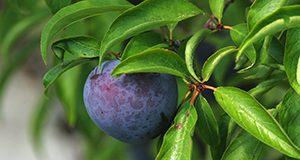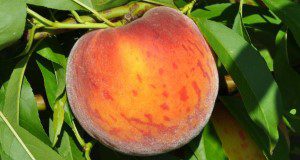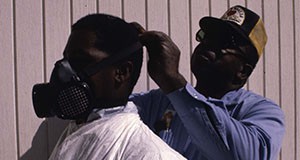Las ciruelas podrían ser un cultivo potencial para los productores y propietarios de viviendas en Florida y otras áreas de invierno templado en toda la costa del Golfo, pero muchas variedades de ciruelas de la costa oeste no funcionarán de manera consistente en Florida para producir fruta. Sin embargo, el programa de mejoramiento de fruta de hueso de la Universidad de Florida ha desarrollado cultivares que mejoran el potencial para el cultivo de ciruelas en Florida y otras áreas de invierno templado que tienen alta presión de enfermedades. Estos cultivares se recomiendan para probar en Florida. Los nombres de todos los cultivares de ciruela de la Universidad de Florida comienzan con el prefijo 'Gulf'. Estos cultivares son ciruelas de tipo japonés (Prunus salicina Lindl.) y tienen resistencia al escaldado de hojas de ciruela (Xylella fastidiosa) y a la bacteriosis o cribado (Xanthomonas campestris). El tamaño del fruto es satisfactorio (aproximadamente 1½ a 2 pulgadas de diámetro) con buena calidad del fruto. Maduran a principios o finales de mayo, aproximadamente dos semanas antes de que las ciruelas de otras áreas lleguen al Mercado.
This new 14-page fact sheet is the Spanish translation of HS895/HS250, Growing Plums in Florida, written by A. Sarkhosh, M. Olmstead, E. P. Miller, P. C. Andersen, and J. G. Williamson, translated by Tatiana Sanchez, and published by the UF/IFAS Horticultural Sciences Department.
https://edis.ifas.ufl.edu/hs1364
Tag: Tatiana Sanchez
Variedades de Durazno y Nectarina en la Florida
La Universidad de la Florida ha desarrollado cultivares de nectarina y durazno de alta calidad, bajo requerimiento de horas frio, y de maduracion temprana que pueden cultivarse desde el Panhandle de la Florida (noroeste del estado) tan al sur como Immokalee. Cultivares de bajas horas frio pueden crecer y producir fruta bajo las condiciones de la Florida que son mucho mas calidas en el invierno que en estados mas al norte. This 18-page fact sheet, translated by Tatiana Sanchez and published by the UF/IFAS Horticultural Sciences Department, is the Spanish-language version of CIR1159, Florida Peach and Nectarine Varieties, written by Ali Sarkhosh, Mercy Olmstead, Jose Chaparro, Pete Andersen, and Jeff Williamson.
https://edis.ifas.ufl.edu/hs1346
Worker Protection Standard: Certified Crop Advisor Exemption
In 1992, the US Environmental Protection Agency (EPA) issued a comprehensive regulation called the Worker Protection Standard for Agricultural Pesticides (WPS). The EPA has made several changes to the WPS since it was fully implemented in 1995. On November 2, 2015, the EPA made significant changes to the rule’s requirements. Most of the revised provisions will become effective January 2, 2017 and there are four provisions that are delayed until January 2, 2018. This five-page fact sheet answers questions regarding changes made to the exemptions for Certified Crop Advisors. Written by Frederick M. Fishel and Tatiana Sanchez and published by the Agronomy Department.
http://edis.ifas.ufl.edu/pi265
Worker Protection Standard: Notification and Hazard Communication
In 1992, the US Environmental Protection Agency (EPA) issued a comprehensive regulation called the Worker Protection Standard for Agricultural Pesticides (WPS). The EPA has made several changes to the WPS since it was fully implemented in 1995. On November 2, 2015, the EPA made significant changes to the rule’s requirements. Most of the revised provisions will become effective January 2, 2017 and there are four provisions that are delayed until January 2, 2018. This five-page fact sheet answers questions regarding changes made to the rules about notification and hazard communication. Written by Frederick M. Fishel and Tatiana Sanchez, and published by the Agronomy Department.
http://edis.ifas.ufl.edu/pi266
Worker Protection Standard: Information at a Central Location
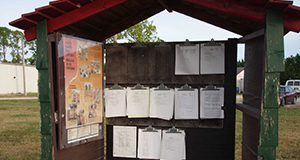
This three-page FAQ fact sheet answers questions about posting information at a central location per the regulations of the Worker Protection Standard (WPS).
Written by Frederick M. Fishel and Tatiana Sanchez and published by the Agronomy Department.
http://edis.ifas.ufl.edu/pi149
Worker Protection Standard: Owner and Immediate Family Exemption
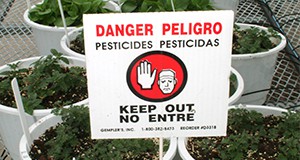
This three-page FAQ fact sheet answers questions about the exemptions for owners and their immediate families in the Worker Protection Standard (WPS).
Written by Frederick M. Fishel and Tatiana Sanchez and published by the Agronomy Department.
http://edis.ifas.ufl.edu/pi264
Worker Protection Standard: Application Exclusion Zone (AEZ)

The Worker Protection Standard (WPS) is a Federal regulation designed to protect agricultural workers (people involved in the production of agricultural plants) and pesticide handlers (people mixing, loading, or applying pesticides or doing other tasks involving direct contact with pesticides).The “Application Exclusion Zone” or AEZ is a new term used in the WPS rule; it refers to the area surrounding the pesticide application equipment. This three-page fact sheet explains this new rule. Written by Fred M. Fishel and Tatiana Sanchez and published by the Agronomy Department.
http://edis.ifas.ufl.edu/pi263
Clasificacion de las licencias para aplicadores dictadas por el Departamento de Agricultura y Servicios al Consumidor del estado de la Florida (FDACS), relacionadas con agricultura y control de plagas
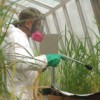 Esta guía ofrece una explicación de las licencias para aplicadores de pesticidas privados, públicos y comerciales emitidos por FDACS en el Capítulo 487 de los Estatutos de la Florida. This 4-page fact sheet is the Spanish language version of Agricultural and Related Pest Control Applicator License Classifications under the Florida Department of Agriculture and Consumer Services (FDACS). Written by Frederick M. Fishel and Tatiana Sanchez, and published by the UF Department of Agronomy, February 2014.
Esta guía ofrece una explicación de las licencias para aplicadores de pesticidas privados, públicos y comerciales emitidos por FDACS en el Capítulo 487 de los Estatutos de la Florida. This 4-page fact sheet is the Spanish language version of Agricultural and Related Pest Control Applicator License Classifications under the Florida Department of Agriculture and Consumer Services (FDACS). Written by Frederick M. Fishel and Tatiana Sanchez, and published by the UF Department of Agronomy, February 2014.
http://edis.ifas.ufl.edu/pi249
Mejorando la efectividad de un programa profesional para el manejo de plagas
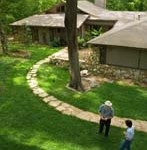 El propósito de esta guía es proporcionar información que permita optimizar el control de plagas en el entorno del hogar cuando se trabaja con un operador profesional para el control de plagas. This 2-page fact sheet is a Spanish language translation of Enhancing the Effectiveness of a Professional Pest Management Program, written by Frederick M. Fishel and Tatiana Sanchez, and published by the UF Department of Agronomy, March 2014.
El propósito de esta guía es proporcionar información que permita optimizar el control de plagas en el entorno del hogar cuando se trabaja con un operador profesional para el control de plagas. This 2-page fact sheet is a Spanish language translation of Enhancing the Effectiveness of a Professional Pest Management Program, written by Frederick M. Fishel and Tatiana Sanchez, and published by the UF Department of Agronomy, March 2014.
http://edis.ifas.ufl.edu/pi252
